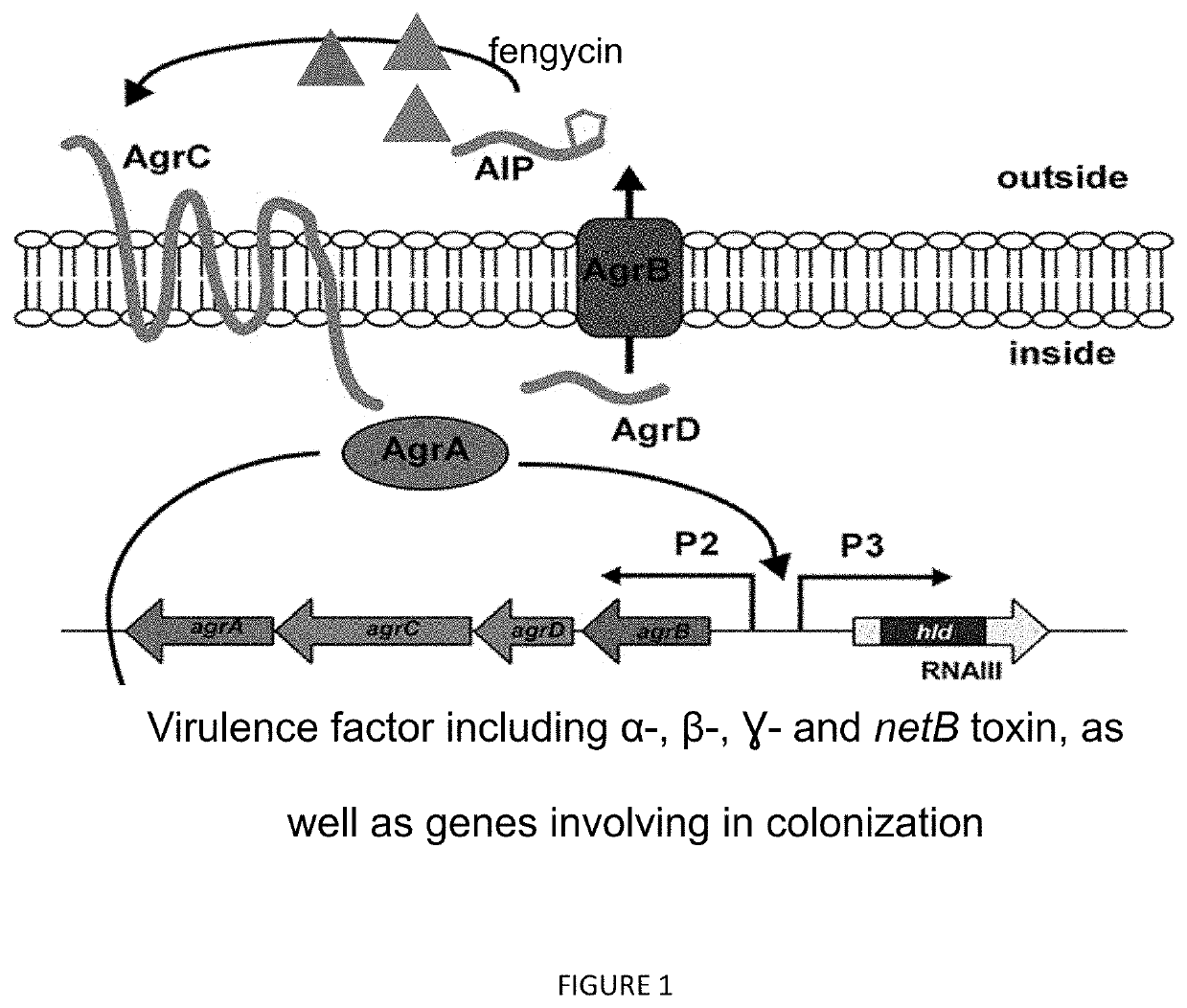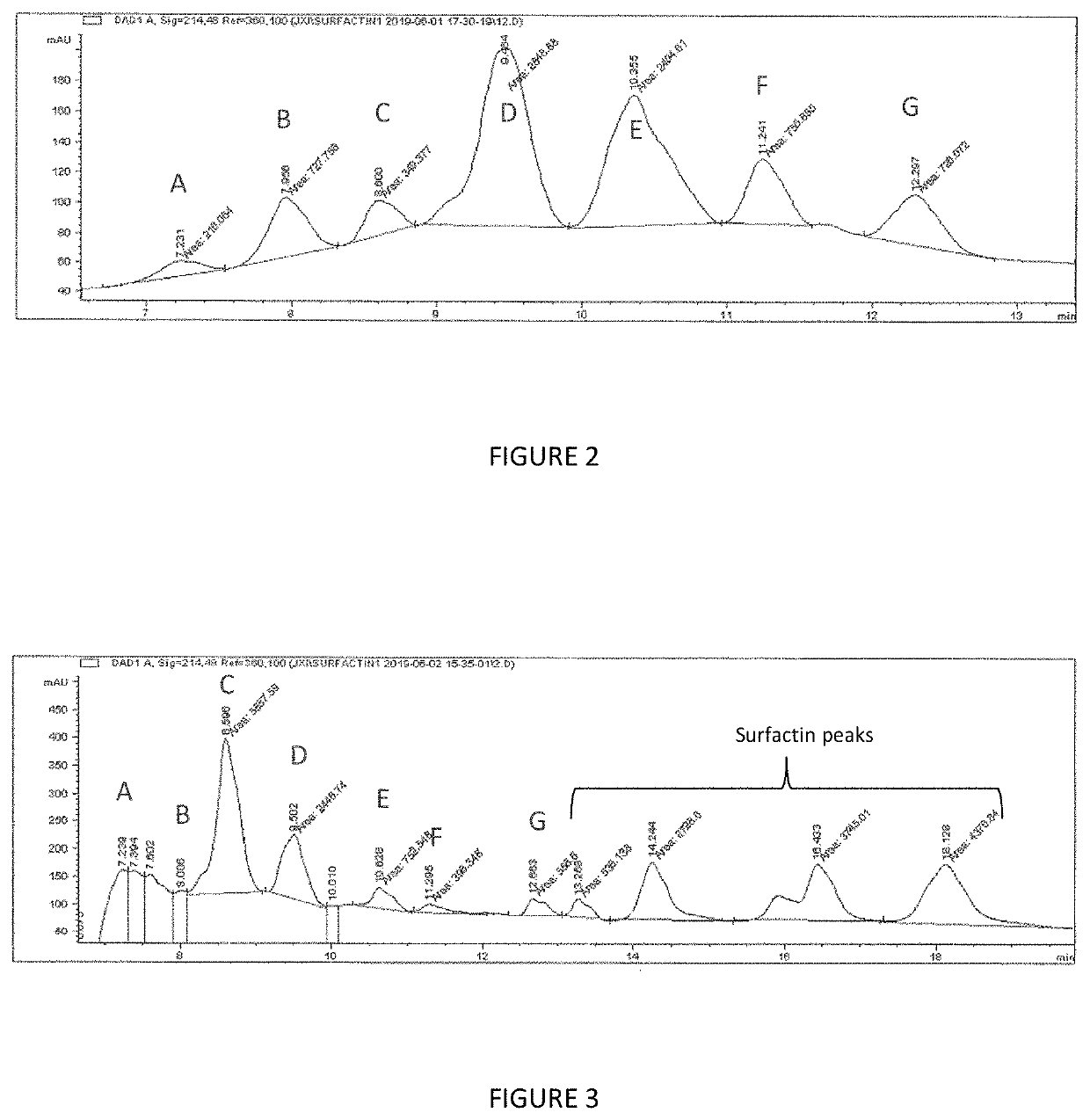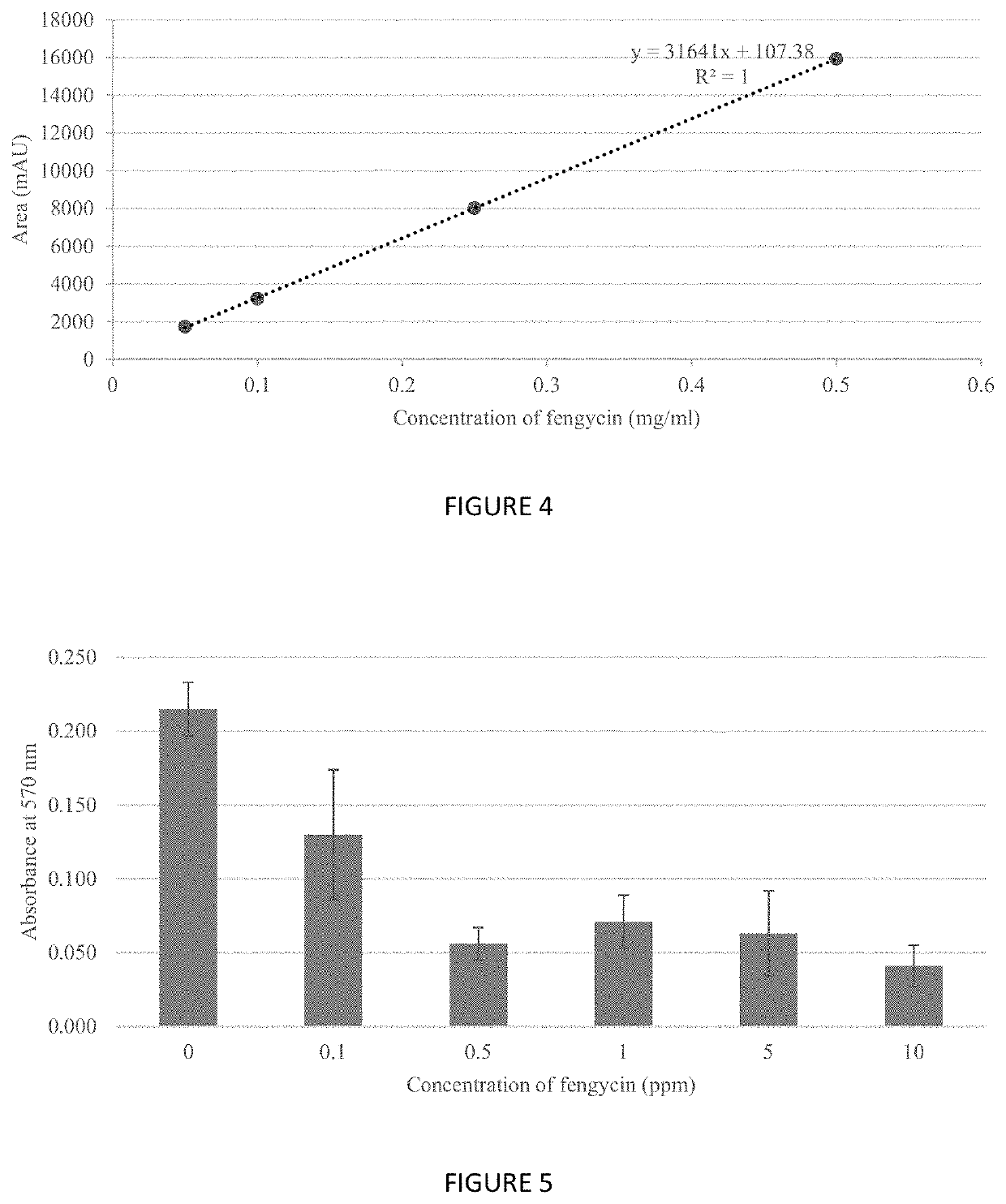Method for controlling clostridium infection in animals
a technology of clostridium and clostridium infectious animals, applied in the field of cell cell communication system, can solve the problems of high mortality rate, antibiotics cannot be administered to healthy or non-symptomatic animals,
- Summary
- Abstract
- Description
- Claims
- Application Information
AI Technical Summary
Benefits of technology
Problems solved by technology
Method used
Image
Examples
example 1
Inhibition of C. perfringens Biofilm Formation by Fengycin
Materials and Methods
[0029]Strain, culture media and chemical. Wild-type C. perfringens strain 4.6 was isolated from a farm in Japan. TGY broth (3% tryptone soya broth (Oxoid), 2% glucose, 1% yeast extract (Oxoid) and 0.1% sodium thioglycolate (Sigma Aldrich) was used to culture C. perfringens strain 4.6 (10). Pure fengycin (≥90%) used in this study was purchased from Sigma Aldrich.
[0030]Detection and quantification of fengycin in culture supernatant of B. subtilis P86. B. subtilis PB6 was revived by streaking on Tryptone Soya Agar with 0.6% yeast extract (TSAYE) and incubated at 37° C. for 18 hours. After 18 hours, a single colony of B. subtilis PB6 was cultured in 25 mL of Tryptone Soya Broth with 0.6% yeast extract (TSBYE) in a 50 mL conical tube. The tube was loosely capped and incubated at 37° C. for 18 hours with shaking at 150 rpm. The overnight culture broth was centrifuged at 4000 rpm for 10 mins. 5×10 mL of supernat...
example 2
Fengycin Inhibition of Perfringolycin O Expression by C. perfringens
Materials and Methods
[0038]A single colony of C. perfringens strain 4.6 (CP4.6) was inoculated in TGYST (tryptone glucose yeast supplemented with sodium thioglycolate) medium for 16 h. The bacterial culture was diluted 100× in fresh TGYST medium supplemented with fengycin (Sigma Aldrich) and incubated anaerobically at 37° C. for 6 h. A negative solvent control was included in the experiment. Total cell count was determined by serial dilution in TGYST and plated on TSA (tryptic soy agar) at the end of experiment. Cell-free supernatant was obtained by centrifugation at 14,000 rpm for 5 min and filtration via a 0.2 um filter (CA filter, Sartorius). A total of 75 ul cell-free supernatant was dispended to the hole created on the TSA supplemented by 5% sheep blood (Thermo Scientific). The plate was incubated anaerobically at 37° C. for 24 h prior to imaging.
Results
[0039]C. perfringens strain 4.6 (CP4.6) is a Type G farm ...
PUM
| Property | Measurement | Unit |
|---|---|---|
| Fraction | aaaaa | aaaaa |
| Dimensionless property | aaaaa | aaaaa |
| Dimensionless property | aaaaa | aaaaa |
Abstract
Description
Claims
Application Information
 Login to View More
Login to View More - R&D
- Intellectual Property
- Life Sciences
- Materials
- Tech Scout
- Unparalleled Data Quality
- Higher Quality Content
- 60% Fewer Hallucinations
Browse by: Latest US Patents, China's latest patents, Technical Efficacy Thesaurus, Application Domain, Technology Topic, Popular Technical Reports.
© 2025 PatSnap. All rights reserved.Legal|Privacy policy|Modern Slavery Act Transparency Statement|Sitemap|About US| Contact US: help@patsnap.com



